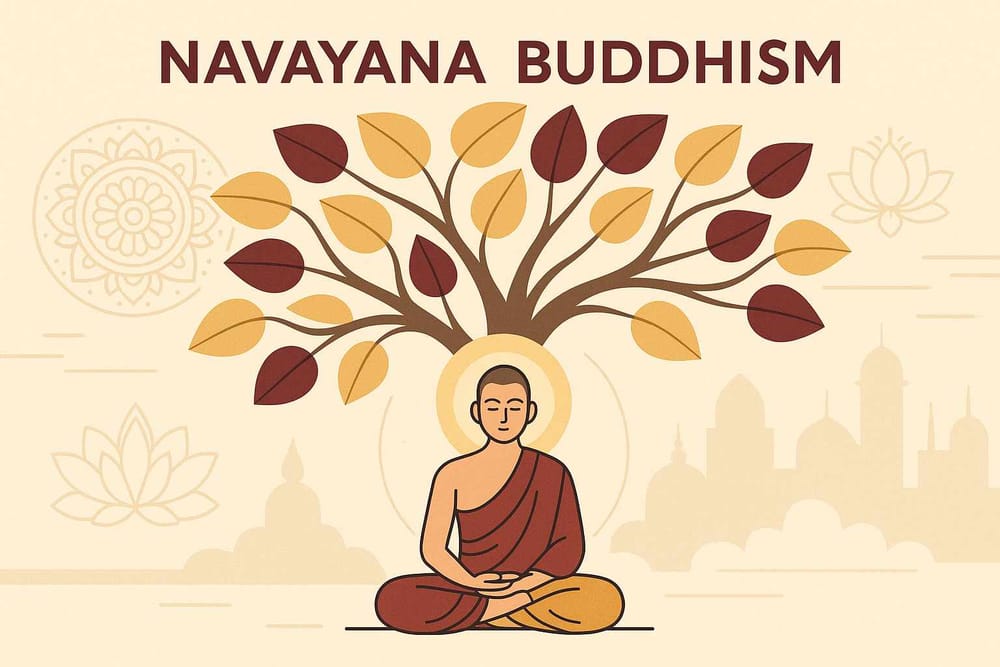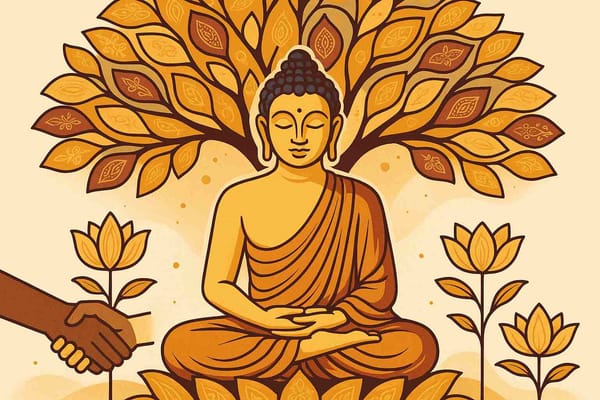
Navayana- Buddhism's Modern Perspective Explored
Kabhi socha hai, ki adhyatma aur insaaf ka rishta kitna gehra ho sakta hai? Have you ever felt that true spirituality should not only bring peace to our souls but also fight the injustices we see in the world? We often think of faith as a personal journey, a quiet conversation with the divine. But what if it could also be a powerful voice for change, a vehicle for uplifting an entire community? This very thought is the heart of Navayana Buddhism, a path that is as much about social revolution as it is about spiritual awakening.
It’s a story born from centuries of pain, a story of seeking dignity, and a story of finding a new way forward. Let's explore this modern interpretation of an ancient faith, a path carved out by the great Dr. B.R. Ambedkar himself.
The Spark of a Revolution: Why Navayana Came to Be
To understand Navayana, we must first understand the world it emerged from. For centuries, Indian society was plagued by the deep-rooted problem of the caste system. For millions, especially the Dalit community, life was a daily struggle against discrimination and oppression. It was in this backdrop that a visionary leader, Dr. B.R. Ambedkar, the architect of our Constitution, sought a spiritual answer to a social problem.
He studied different faiths, searching for a path that truly embraced liberty, equality, and fraternity. His search ended with Buddhism. For him, the Buddha was not just a divine figure, but a great social reformer who challenged the inequalities of his time. In 1956, in a historic ceremony in Nagpur, Dr. Ambedkar, along with hundreds of thousands of his followers, embraced Buddhism. This wasn't just a change of religion; it was a powerful rejection of caste hierarchy and a reclaiming of human dignity. This was the birth of Navayana, the "New Vehicle."
His book, The Buddha and His Dhamma, became the cornerstone of this new path. It reinterpreted Buddhist teachings not as complex metaphysical doctrines, but as practical tools for creating a just and compassionate society.
The Core of Navayana: Dharma in Action
So, what makes this "New Vehicle" different from the traditional forms of Buddhism we might know, like Theravada or Mahayana? The difference is both subtle and profound. While all paths lead towards ending suffering, Navayana frames that suffering differently.
- Focus on Social Justice: At its heart, Navayana is a socially engaged Buddhism. It believes that true spiritual progress is impossible if society itself is unjust. It reinterprets the concept of Dukkha (suffering) not just as personal pain, but as the suffering caused by social structures like inequality, poverty, and discrimination. The path to liberation, therefore, involves actively working to dismantle these oppressive systems.
- A Rational and Modern Approach: Dr. Ambedkar envisioned a Dharma that was in sync with scientific reasoning. Navayana encourages critical thinking and questions rituals or supernatural beliefs that don't align with logic. The emphasis is on education, self-reliance, and direct action to solve real-world problems. It's about finding wisdom for Dharma in daily life in a very practical way.
- Reimagining Karma and Rebirth: This is one of the most significant points of divergence. Traditional Buddhism sees karma and rebirth as fundamental laws. However, Navayana views these concepts as having been historically misused to justify the caste system—implying that one's birth is a result of past actions. Instead, Navayana focuses on our actions in *this* life and their collective impact on society. The goal is to create a just world here and now.
Navayana's Echo in Modern India and Beyond
Today, Navayana is much more than just a spiritual path; it's a vibrant cultural and social movement. It has given a powerful voice and a sense of pride to millions, especially within the Dalit community. You can see its influence flourishing in art, poetry, and powerful autobiographical literature, where individuals share their stories of struggle and empowerment.
This modern perspective on Buddhism is attracting many young people and urban Indians who are looking for a spiritual system that resonates with their values of equality and justice. People often ask if anyone can follow Navayana, and the answer is a resounding yes. It is an open path for anyone, from any background, who believes that compassion and justice must walk hand in hand.
Its message of equality also resonates globally, contributing to important conversations about racial, gender, and economic disparities. It sees other religions not as competitors, but as potential allies in the shared struggle for a more humane world, reflecting the kind of profound wisdom for modern living we all seek.
Of course, this bold reinterpretation has faced criticism from some traditional Buddhists, who feel it moves too far from the original teachings. Yet, this ongoing dialogue is a sign of a living, evolving tradition, grappling with how ancient wisdom can meet the challenges of our time.
A Final Thought: A Path of Hope and Action
Navayana stands as a powerful reminder that faith is not meant to be static. It can adapt, grow, and become a force for profound social transformation. It harmonises the Buddha's timeless message of compassion with the urgent need for justice in our modern world.
It teaches us that spirituality isn't about escaping the world, but about engaging with it more deeply, with more kindness, and with a stronger resolve to leave it a better place. Whether one follows Navayana or a more traditional path, the essence remains the same: to live a life of wisdom, compassion, and selfless service to all of humanity.
About Us
At Bhaktilipi, we believe in making such deep and diverse spiritual wisdom accessible to everyone. We are a digital space dedicated to preserving timeless devotional literature, reimagining it for today’s readers, and sharing these stories with authenticity and love. Our goal is to help you connect with your spiritual roots in a way that is meaningful and relevant to your life.
Why Explore With Bhaktilipi?
Here, you can discover knowledge about concepts like Navayana Buddhism and other devotional topics in simple, relatable ways. We bridge the gap between ancient wisdom and modern life, ensuring you stay rooted in tradition while navigating the present. Whether you are just starting your spiritual journey or seeking to deepen your understanding, our resources are here to inspire and guide you.
Stay connected with our community for more authentic and heartfelt content. Follow us on our journey of devotion and learning:
A passionate group of people dedicated to preserving India's knowledge of Dharma, Karma, and Bhakti for ourselves and the world 🙏.
Comments
Related in

Exploring the Navayana - Buddhism's Modern Path
In our hearts, many of us carry a quiet longing—a desire for a spiritual path that doesn’t ask us to leave our minds at the door. We seek a faith that speaks not only of inner peace but also of justice and dignity in the world around us.

Navayana Buddhism- Explores a New Perspective
In the vast tapestry of Indian spirituality, faith is often a legacy we inherit, a path our ancestors walked. But sometimes, faith becomes a choice—a powerful, conscious decision to forge a new path. It becomes a statement, a revolution. This is the story of Navayana Buddhism, the "New

Exploring Spiritual Heritage-Navayana and Iconic Temples in Faridabad
Sometimes, we think we know a city. We see the tall buildings, the busy roads, the rush of daily life, and we assume that’s the whole story. I used to think of Faridabad that way – a bustling industrial hub, a close cousin to Delhi. But beneath this modern surface,
